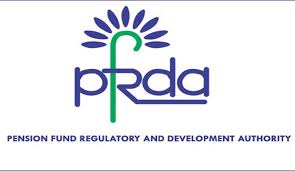PFRDA Assistant Manager Syllabus & Exam Pattern PDF: Candidates are you looking for PFRDA Assistant Manager Syllabus: Then this is the Correct place for you to get the Pension Fund Regulatory and Development Authority Syllabus for Assistant Manager Jobs 2023. Here we have uploaded the Latest Updated PFRDA Assistant Manager Syllabus PDF for the Aspirants who had applied for the PFRDA Assistant Manager Jobs 2023 and Preparing for Assistant Manager wrote exam. The Applicants should have a minimum Idea about the Syllabus and Exam Structure before starting the Exam Preparation.
Contents in this Article
PFRDA Assistant Manager Syllabus 2023
| Organization Name | Pension Fund Regulatory and Development Authority |
| Post Name | Officer Grade ‘A’ (Assistant Manager) |
| Category | Syllabus |
| Selection Process | Online Exam, Interview |
| Job Location | Across India |
| Official Site | pfrda.org.in |
PFRDA Officer Grade ‘A’ (Assistant Manager) Exam Pattern 2023
Phase – 1
Paper-1
| Name Of Subject | Number Of Question | Number Of Marks |
| English | 20 | 25 |
| Quantitative Aptitude | 20 | 25 |
| Test of Reasoning | 20 | 25 |
| General Awareness (including some questions related to Financial Sector) | 20 | 25 |
- An online screening examination consisting of two papers with Multiple Choice Questions
- Total Marks – 100
- Time Duration – 60 minutes
Paper-2
| Name Of Subject | Number Of Question | Number Of Marks |
| General Stream: Multiple choice questions on subjects Commerce, Accountancy, Management, Finance, Costing, Companies Act, Economics, and Pension Sector. | 50 Questions | 100 Marks |
| Actuarial, Information Technology, Official Language, Finance & Accounts, Research (Economics), and Research (Statistics) Streams: Multiple choice questions on Specialised subjects related to the stream. | 50 Questions | 100 Marks |
- There shall be negative marking (1/4th of marks assigned to the question) for Paper 1 and Paper 2 in Phase I.
PHASE-II ONLINE EXAMINATION
Paper-1
| Name Of Subject | Number Of Question | Number Of Marks |
| All Streams: English (Descriptive Test) to test the drafting skills | 3 Questions | 100 Marks |
- Time Duration – 60 minutes
Paper-2
| Name Of Subject | Number Of Question | Number Of Marks |
| General Stream: Multiple choice questions on subjects Commerce, Accountancy, Management, Finance, Costing, Companies Act, Economics, and Pension Sector. | 50 Questions | 100 Marks |
| Actuarial, Information Technology, Official Language, Finance & Accounts, Research (Economics), and Research (Statistics) Streams: Multiple choice questions on Specialised subjects related to stream | 50 Questions | 100 Marks |
- There shall be a negative marking (1/4th of marks assigned to the question) for Paper 2 in phase II
- Saraswat Bank Junior Officer Previous Question Papers (PDF) Download
- OSSSC Livestock Inspector Previous Question Papers PDF Download
- SSVSS Previous Papers – Download SSVSS MTS, Teacher, Computer Operator Question Papers
- 7th Class SA2 CBA3 Social Question Papers (Download) Summative 2 Model Papers PDF
- Indira Gandhi MCRI Staff Nurse Exam Pattern, Syllabus, Previous Papers pdf
- SBI Junior Associate Previous Question Papers (Download) SBI Jr Associate Model Papers PDF
- TSPSC Librarian Previous Question Papers 2023 PDF (Download) Telangana Gurukul School Librarian Model Papers
- BPSC Commercial Tax Officer Previous Papers – PDF | Bihar PSC CCE Model Papers
- NVS Previous Question Papers (Download) TGT, PGT, LDC Model Papers PDF
- SBI SCO Previous Question Papers (PDF) Specialist Cadre Officer Model Papers Download
Download PFRDA Assistant Manager Syllabus PDF
To help the Contenders we have uploaded the Updated Exam Pattern in the below section and PFRDA Assistant Manager Syllabus PDF at the end of our webpage Questionpapersonline.com. So check out this entire article and download the PFRDA Assistant Manager Syllabus PDF free of charge.
| Streams | Syllabus |
| Phase I | |
| Paper I All Streams |
|
| Paper II General Stream | Commerce & Accountancy
Management
Finance
Costing
Companies Act The Companies Act, 2013 – Specific reference to Chapter III, Chapter IV, Chapter VIII, Chapter X, Chapter XI, Chapter XII, and Chapter XXVII. Economics
Pension Sector
|
| Information Technology | Database Concepts
SQL Queries
Programming Concepts (Java /C C++)
Data Analytics Languages (Python /R)
Algorithms for problem-solving
Networking Concepts
Information & Cyber Security Concepts
Data warehousing
Shell Programming
|
| Research (Economics) |
|
| Research (Statistics) |
|
| – |
Trial Balance
a) Basics of Derivatives: Forward, Futures, and Swap b) Recent Developments in the Financial Sector c) Financial Inclusion- use of technology d) Alternate source of finance, private and social cost-benefit, Public-Private Partnership e) Direct and Indirect taxes; Non-tax sources of Revenue, Finance Commission, Fiscal Policy, Fiscal Responsibility and Budget Management Act (FRBM), f) Inflation: Definition, trends, estimates, consequences, and remedies (control): WPI, CPI – components and trends. g) Economics: Capital market, Money market, Micro and macroeconomics concepts and Updates related to money market and RBI policies |
| Official Language (Rajbhasha) |
|
| Actuarial Stream | Insurance and Management Part 1 – Insurance
Part 2 – Management
|
| Phase II | |
| English (Descriptive Test) | To assess the writing skills including expression and understanding of the topic including precis writing/ essay writing/ comprehension |
| Paper-II | Same as Phase I Paper II |
PFRDA Assistant Manager Syllabus – Frequently Asked Questions(FAQ)
What is PFRDA Assistant Manager Syllabus?
What is the Exam Pattern for PFRDA Assistant Manager2023?
Where can I Get the PFRDA Assistant Manager Syllabus PDF?
What are the Total Marks for PFRDA Assistant Manager Exam?
How many Questions will be asked in the PFRDA Assistant Manager Exam ?

